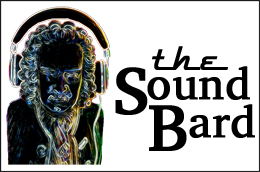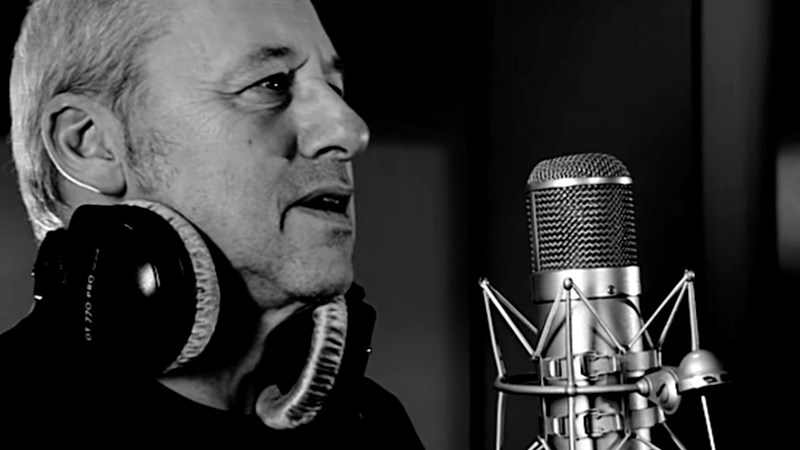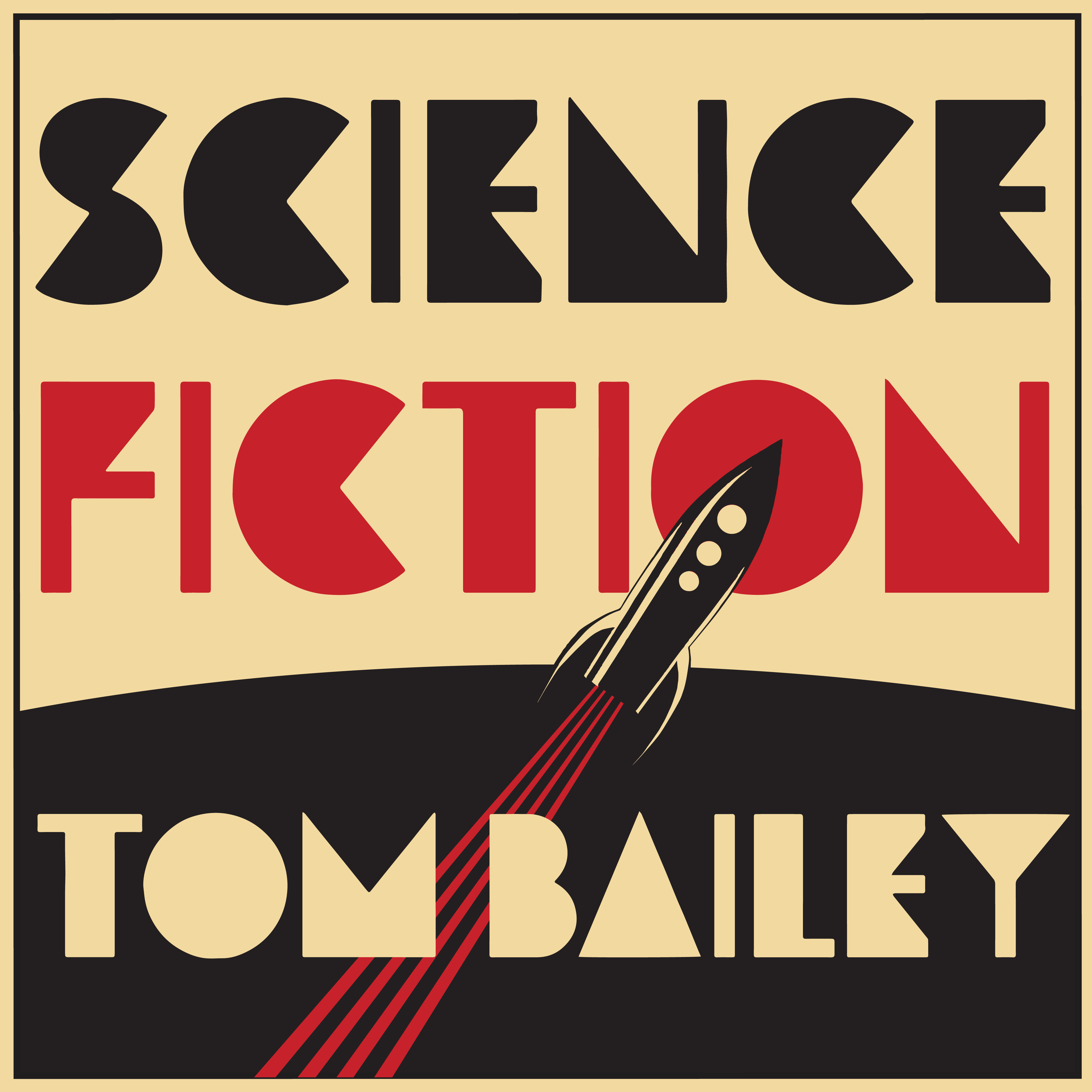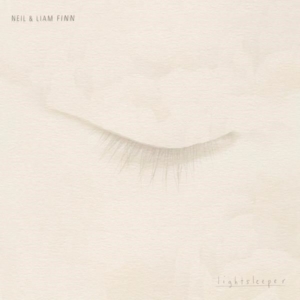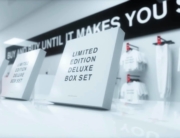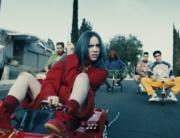BY MIKE METTLER — DECEMBER 31, 2018
Whether you choose to digest your music via hi-res audio downloads, 180-gram LPs, streaming services, standard-issue CDs, and/or full-on 5.1 surround sound, this past year delivered a wonderfully wide spate of full-length aural goodness. In reverse order, here are The SoundBard’s Top 31 long-players of 2018.
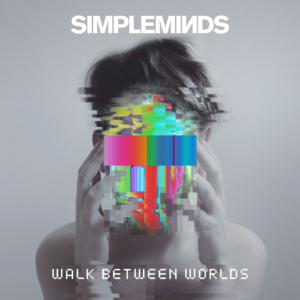 Simple Minds: Walk Between Worlds. (BMG). SM frontman Jim Kerr and his songwriting foil, guitarist/keyboardist Charlie Burchill, show their ongoing creative sanctification over the course of Worlds by deftly walking the fine line between delivering uplifting singalong anthems (the instantly seductive tone of lead track “Magic”) and pushing the aural envelope (the synth-and-guitar-meshed forward thrust of “The Signal and the Noise”). “You want to keep the essence of the band and put the stuff you’re known for upfront, but at the same time, you only want it to be retro to a point,” Kerr told me earlier this year. “You want it to feel like it’s got a contemporary heartbeat and it’s an extension of the story — but it’s not the same old story.” Simply magnificent.
Simple Minds: Walk Between Worlds. (BMG). SM frontman Jim Kerr and his songwriting foil, guitarist/keyboardist Charlie Burchill, show their ongoing creative sanctification over the course of Worlds by deftly walking the fine line between delivering uplifting singalong anthems (the instantly seductive tone of lead track “Magic”) and pushing the aural envelope (the synth-and-guitar-meshed forward thrust of “The Signal and the Noise”). “You want to keep the essence of the band and put the stuff you’re known for upfront, but at the same time, you only want it to be retro to a point,” Kerr told me earlier this year. “You want it to feel like it’s got a contemporary heartbeat and it’s an extension of the story — but it’s not the same old story.” Simply magnificent.
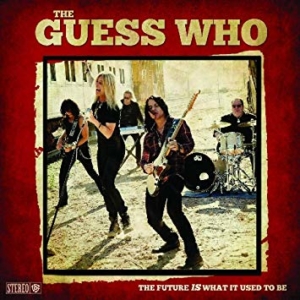 The Guess Who: The Future IS What It Used to Be. (Cleopatra). As shepherded by the supremely in-sync creative tandem of D# (Derek Sharp) and Will E (Will Evankovich), The Guess Who’s first new studio album in over 30 years fortifies all that is good and just about pop/rock song structure and how it makes you feel as a listener. The pure-power earwig “Playin’ on the Radio” is an airwaves-driven barnburner and “When We Were Young” meshes sweet harmonies, clever nostalgia, and funky grit to a T, while “Haunted” is a soul-affecting, deeply personal D# piano ballad. “The more you flex your songwriting muscles, the better you get at it,” Derek told me in New York back in September. The Guess Who are as muscle-toned as any band out there today, and their Future looks — and sounds — quite bright to me.
The Guess Who: The Future IS What It Used to Be. (Cleopatra). As shepherded by the supremely in-sync creative tandem of D# (Derek Sharp) and Will E (Will Evankovich), The Guess Who’s first new studio album in over 30 years fortifies all that is good and just about pop/rock song structure and how it makes you feel as a listener. The pure-power earwig “Playin’ on the Radio” is an airwaves-driven barnburner and “When We Were Young” meshes sweet harmonies, clever nostalgia, and funky grit to a T, while “Haunted” is a soul-affecting, deeply personal D# piano ballad. “The more you flex your songwriting muscles, the better you get at it,” Derek told me in New York back in September. The Guess Who are as muscle-toned as any band out there today, and their Future looks — and sounds — quite bright to me.
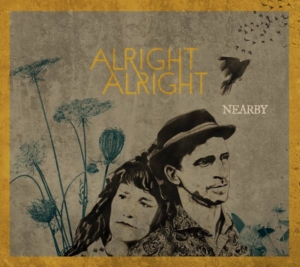 Alright Alright: Nearby. (Hooves and Sugar Recording Co.) Achieving a certain level of intuitive, zen-like balance is a rare find, and it’s something that also describes the synergistic working dynamic between China and Seth Kent, the powerhouse husband-and-wife songwriting team who drive the Denver-based alt-folk collective known as Alright Alright (a.k.a. Alrightx2). From the strings-and-choir-driven wishing-well aspirations of “Be Kind” to the slow-building smoky-twangy revelations of “By the Bed” to the zeitgeist temperature-taking of “Luckiest Girl in America” to the harmonic bent-truth yearnings of “The Liar,” Nearby deftly shares the universality of China and Seth’s interconnectivity. “Every song on Nearby is a combination of who produced it and who recorded it,” China told me back in June. “And the challenge,” added Seth, “was in making it all into something cohesive.” The overall good vibes and deeply personal nature of Nearby is as close to as it gets to being a seamless, in-tandem delineation of the heart of the matter.
Alright Alright: Nearby. (Hooves and Sugar Recording Co.) Achieving a certain level of intuitive, zen-like balance is a rare find, and it’s something that also describes the synergistic working dynamic between China and Seth Kent, the powerhouse husband-and-wife songwriting team who drive the Denver-based alt-folk collective known as Alright Alright (a.k.a. Alrightx2). From the strings-and-choir-driven wishing-well aspirations of “Be Kind” to the slow-building smoky-twangy revelations of “By the Bed” to the zeitgeist temperature-taking of “Luckiest Girl in America” to the harmonic bent-truth yearnings of “The Liar,” Nearby deftly shares the universality of China and Seth’s interconnectivity. “Every song on Nearby is a combination of who produced it and who recorded it,” China told me back in June. “And the challenge,” added Seth, “was in making it all into something cohesive.” The overall good vibes and deeply personal nature of Nearby is as close to as it gets to being a seamless, in-tandem delineation of the heart of the matter.
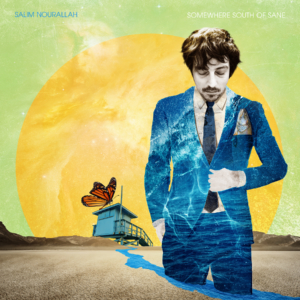 Salim Nourallah: Somewhere South of Sane. (Palo Santo). The 21 heartfelt tracks that comprise singer/songwriter/producer/musician-of-many-trades Salim Nourallah’s four-sided song cycle follow the arc of a man who knows he’s falling apart, yet is still able to emerge from the after-effects of his personal wreckage to see the light of what’s ahead. Witness the joyful innocence of “Boy in a Record Shop,” the gut-wrenching self-realization of the caterwauling “I Missed My Own Life,” the dueling creative collision of the Beatlesque melodic/lyrical axis on display in “Tucumcari,” the intrinsically transitional nature of “Moving Man,” and the hopeful album-ending gleam of “You’re the Light” for further self-evidence. “Songwriting is a waiting game,” Salim told me back in March. “While you continue to observe things, feel things, and even jot down titles, it’s basically waiting for the moment where you enter this trance state of tuning into a distant radio station. There’s a song out there somewhere, and it’ll start coming through — but you can’t force it, or ‘demand’ that it happens.” Based on the stirring depth that’s inherent all throughout this album, the songs of Sane were clearly worth the wait.
Salim Nourallah: Somewhere South of Sane. (Palo Santo). The 21 heartfelt tracks that comprise singer/songwriter/producer/musician-of-many-trades Salim Nourallah’s four-sided song cycle follow the arc of a man who knows he’s falling apart, yet is still able to emerge from the after-effects of his personal wreckage to see the light of what’s ahead. Witness the joyful innocence of “Boy in a Record Shop,” the gut-wrenching self-realization of the caterwauling “I Missed My Own Life,” the dueling creative collision of the Beatlesque melodic/lyrical axis on display in “Tucumcari,” the intrinsically transitional nature of “Moving Man,” and the hopeful album-ending gleam of “You’re the Light” for further self-evidence. “Songwriting is a waiting game,” Salim told me back in March. “While you continue to observe things, feel things, and even jot down titles, it’s basically waiting for the moment where you enter this trance state of tuning into a distant radio station. There’s a song out there somewhere, and it’ll start coming through — but you can’t force it, or ‘demand’ that it happens.” Based on the stirring depth that’s inherent all throughout this album, the songs of Sane were clearly worth the wait.
27. Tom Bailey: Science Fiction. (Mikrokosmos/BFD). The chief architect of the super-successful ’80s synth-pop masters Thompson Twins triumphantly returns to hit-driven songcrafting after 25 years of soundtrack work and deep-dive dub/electronica dalliances. From the universal yearnings of the title track to the Bowiesque thrust of “What Kind of World” to the seductive reggae vibe of “Blue,” Bailey reinforces his inherent knack for creating instantly singable choruses and melodic hooks. “It’s like reconnecting with an old friend, you know?” Bailey told me back in July. “You only have a certain amount of time in a pop song, so you have to be very concise and get on with it, really. There’s something unique to pop that doesn’t exist in other forms of music, and what continues to interest me about it is it’s a form with all sorts of rules and requirements that also allows the expression of profound ideas.” Profound and cosmic, Science Fiction fires on all the right cylinders — and that’s a fact.
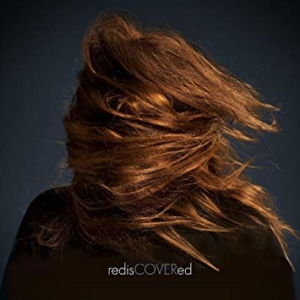 Judith Owen: redisCOVERed. (Twanky). This generation’s current top song interpreter does it once again, this time infusing 12 covers with a knowing world-weariness crossed with a compelling joie de vivre that ultimately acts as a sonic soul-cleansing in the process. Witness the Welsh-bred songstress’ ace transformation of Donna Summer’s sultry “Hot Stuff” into a melancholy come-on, Drake’s “Hotline Bling” into more of a slow-burn sneer, and Soundgarden’s “Black Hole Sun” into a jaunty, sped-up jazz number. “You’re constantly torturing yourself with your need to know about why things fell apart, but you can’t show weakness or be too emotional about them in real life,” Judith told me back in May. “What I’ve found with the songs I’ve chosen for this record is that they’re quite universal, and that they could very much be about my own autobiographical experiences. In covering them, I’ve not only discovered new things about the songs themselves, but also about certain things in my own life that I long ago shelved in the back of my head because they were so painful.” Discover now for yourself how a career artist expertly channels abject pain into aural pleasure.
Judith Owen: redisCOVERed. (Twanky). This generation’s current top song interpreter does it once again, this time infusing 12 covers with a knowing world-weariness crossed with a compelling joie de vivre that ultimately acts as a sonic soul-cleansing in the process. Witness the Welsh-bred songstress’ ace transformation of Donna Summer’s sultry “Hot Stuff” into a melancholy come-on, Drake’s “Hotline Bling” into more of a slow-burn sneer, and Soundgarden’s “Black Hole Sun” into a jaunty, sped-up jazz number. “You’re constantly torturing yourself with your need to know about why things fell apart, but you can’t show weakness or be too emotional about them in real life,” Judith told me back in May. “What I’ve found with the songs I’ve chosen for this record is that they’re quite universal, and that they could very much be about my own autobiographical experiences. In covering them, I’ve not only discovered new things about the songs themselves, but also about certain things in my own life that I long ago shelved in the back of my head because they were so painful.” Discover now for yourself how a career artist expertly channels abject pain into aural pleasure.
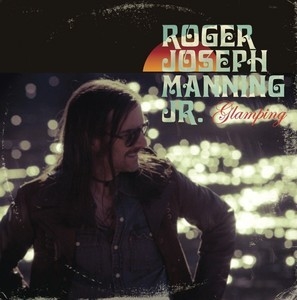 Roger Joseph Manning Jr.: Glamping. (RJMJR). This four-song EP is as strong as any dozen-track LP you’ll hear this or any other year, as it showcases all the strengths of multifaceted keyboard wizard/producer/
Roger Joseph Manning Jr.: Glamping. (RJMJR). This four-song EP is as strong as any dozen-track LP you’ll hear this or any other year, as it showcases all the strengths of multifaceted keyboard wizard/producer/
arranger/songwriter Manning (Beck, Jellyfish, Imperial Drag, TV Eyes, The Moog Cookbook). “Operator” documents a desperate call for any kind of connection, while “Funhouse” playfully, wistfully pines for an era of young lust gone by. Meanwhile, “Is It All a Dream” is a trippy drama study backed with stacks of wonderful harmonies, and the nearly 6-minute “I’m Not Your Cowboy” is a modernized Last Picture Show pastiche chronicling the arc of a manipulative relationship. “Biting off another 12 songs of original material from top to bottom was just taking forever,” Manning told me back in February, “so I felt this was the better way to go. I really do like the architecture and assembly process of getting a song from its raw form of acoustic piano and vocal into this whole other world. Even though it can be very time-consuming for someone like me, it’s like putting together a sonic jigsaw puzzle.” Glamping doesn’t rest for one single second when it comes to providing a quartet of tracks that are pure, solid-state audio dynamite.
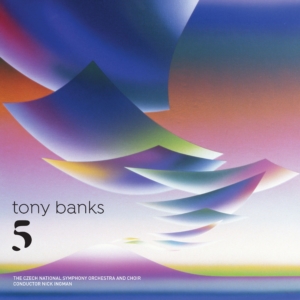 Tony Banks: 5. (BMG). It’s not out of the realm of possibility that, a hundred years from now, people will be talking about the four B’s of piano/organ composition in the same breath — Beethoven, Bach, Brahms, and Banks. And by Banks, I mean Tony Banks, the king of diminished chords who spent many decades as the keyboard anchor for the always forward-thinking British progressive/pop hybrid, Genesis. Post-Genesis, Banks has focused on classical-oriented writing, and his latest release, aptly titled 5 after its five pieces, teems with the breadth of the man’s fully realized, grand-sweeping compositions — best exemplified in the scope of the arrangement for “Prelude to a Million Years,” a 15-minute masterstroke. “That’s a lovely, fantastic thought, and I’m right there with you,” Banks told me back in February with just a tinge of his patented dry sense of humor in response to my “four B’s” theory. “No one can argue with you, because in 100 years’ time, we won’t be there to see it. But, principally, I think my main contribution to everything I’ve done with Genesis and on my own has been as a writer. That’s my greatest attribute, and that’s what I want to be judged on, in a sense, rather than my keyboard playing.” 5 is a most fitting aural tome for such a master of the compositional form.
Tony Banks: 5. (BMG). It’s not out of the realm of possibility that, a hundred years from now, people will be talking about the four B’s of piano/organ composition in the same breath — Beethoven, Bach, Brahms, and Banks. And by Banks, I mean Tony Banks, the king of diminished chords who spent many decades as the keyboard anchor for the always forward-thinking British progressive/pop hybrid, Genesis. Post-Genesis, Banks has focused on classical-oriented writing, and his latest release, aptly titled 5 after its five pieces, teems with the breadth of the man’s fully realized, grand-sweeping compositions — best exemplified in the scope of the arrangement for “Prelude to a Million Years,” a 15-minute masterstroke. “That’s a lovely, fantastic thought, and I’m right there with you,” Banks told me back in February with just a tinge of his patented dry sense of humor in response to my “four B’s” theory. “No one can argue with you, because in 100 years’ time, we won’t be there to see it. But, principally, I think my main contribution to everything I’ve done with Genesis and on my own has been as a writer. That’s my greatest attribute, and that’s what I want to be judged on, in a sense, rather than my keyboard playing.” 5 is a most fitting aural tome for such a master of the compositional form.
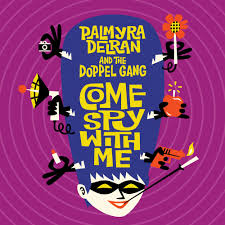 Palmyra Delran and The Doppel Gang: Come Spy With Me. (Wicked Cool). Little Steven, the Godfather of the Underground Garage movement, often refers to Delran as “the Lucille Ball of rock & roll,” and he’s pretty much spot-on. The ever-sunny guitarist/vocalist/
Palmyra Delran and The Doppel Gang: Come Spy With Me. (Wicked Cool). Little Steven, the Godfather of the Underground Garage movement, often refers to Delran as “the Lucille Ball of rock & roll,” and he’s pretty much spot-on. The ever-sunny guitarist/vocalist/
songwriter described her vibe as “trashy pop with hooks, harmonies, and a sense of humor” back in September, and Come Spy With Me puts the magnifying glass on all of her aural strengths. The instantly catchy, eerily prescient title track features the aforementioned Little Steven and Debbie Harry of Blondie fame on background vocals, while “(If You’d Like to Make a Call) Please Hang Up” pleads for a deeper connection and “Tape a Nickel to the Tonearm” dials up the joy of spinning vinyl from an insider’s POV. (Me, I often placed a quarter or two on an LP’s inner-label area if need be back in the day.) “Hopefully the hooks will grab listeners and never let go,” Palmyra posits. No need to worry, m’lady of melody, for Come Spy With Me is trash-pop shindiggery of the highest order.
 Klaus Schulze: Silhouettes. (SPV). The Berlin-born-and-bred sequencer and synthesizer innovator is the direct antecedent for the likes of Brian Eno, not to mention being an absolute master of the Moog, Mini or otherwise. The heady, 71-minute four-song soundscape extravaganza dubbed Silhouettes only serves to add to this 71-year-old’s storied legacy, as highlighted by the overall majesty of “Quae simplex,” the third song in its running order. “It was important for me to paint the pictures in the depth of the space, the sonic fields of tension, and atmosphere,” Schulze observed to me in November. “It has also taken me back to some of my origins, some of my roots, and some of those earlier days, when the musical equipment was not as diverse and available as it is today.” Silhouettes is as sharply focused and aurally invigorating as any electronic music palette of this or any other era.
Klaus Schulze: Silhouettes. (SPV). The Berlin-born-and-bred sequencer and synthesizer innovator is the direct antecedent for the likes of Brian Eno, not to mention being an absolute master of the Moog, Mini or otherwise. The heady, 71-minute four-song soundscape extravaganza dubbed Silhouettes only serves to add to this 71-year-old’s storied legacy, as highlighted by the overall majesty of “Quae simplex,” the third song in its running order. “It was important for me to paint the pictures in the depth of the space, the sonic fields of tension, and atmosphere,” Schulze observed to me in November. “It has also taken me back to some of my origins, some of my roots, and some of those earlier days, when the musical equipment was not as diverse and available as it is today.” Silhouettes is as sharply focused and aurally invigorating as any electronic music palette of this or any other era.
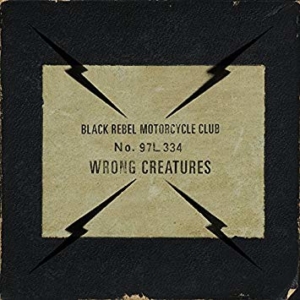 Black Rebel Motorcycle Club: Wrong Creatures. (Vagrant). The hard-driving Bay Area collective a.k.a. BRMC continues to pound home a fierce, fist-pump-inducing message on their seventh, and sturdiest, studio LP. Me, I like to call it leather-jacket rock. Led by bassist/vocalist Robert Levon Been (son of The Call’s late, great Michael Been), BRMC flex some mighty fine rawk musculature for 59 unrelenting minutes, from the echo-laden punk thrust of “Spook” to the twisted, shimmery jangle of “Ninth Configuration” to the eerie tribal blast of “Carried From the Start,” a most fittingly haunting album closer. “We needed to get a lot of things out of our system before we made an album like this where we entered into a new territory,” Been told me back in January. “And I feel really spoiled, because there are very few bands who have multiple albums to get out all the crazy that’s in your head, you know?” Wrong Creatures is the right way to graduate from one helluva sonic habit to another.
Black Rebel Motorcycle Club: Wrong Creatures. (Vagrant). The hard-driving Bay Area collective a.k.a. BRMC continues to pound home a fierce, fist-pump-inducing message on their seventh, and sturdiest, studio LP. Me, I like to call it leather-jacket rock. Led by bassist/vocalist Robert Levon Been (son of The Call’s late, great Michael Been), BRMC flex some mighty fine rawk musculature for 59 unrelenting minutes, from the echo-laden punk thrust of “Spook” to the twisted, shimmery jangle of “Ninth Configuration” to the eerie tribal blast of “Carried From the Start,” a most fittingly haunting album closer. “We needed to get a lot of things out of our system before we made an album like this where we entered into a new territory,” Been told me back in January. “And I feel really spoiled, because there are very few bands who have multiple albums to get out all the crazy that’s in your head, you know?” Wrong Creatures is the right way to graduate from one helluva sonic habit to another.
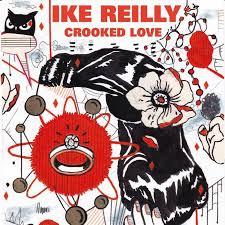 Ike Reilly: Crooked Love. (Rock Ridge). This collection of ten succinct, tight but loose songs reflects the continuing evolution of Reilly’s ever-visceral wordsmithing, as married with a Murderer’s Row of backing tracks forged out of the intuitive interplay of his longstanding Assassination bandmates. From the eve of destruction playfulness of “Missile Site” to the somewhat wary let’s get it on abandon of “Don’t Turn Your Back on Friday Night” to the escapist urgency of “Boltcutter Again” to the gnarly, percolating groove drip of “Clean Blood Blues,” Crooked Love shows how the gentleman Chicagoan has landed himself squarely in the raw, emotional zeitgeist of the times. “Some of these takes were great in the sense that I was really locked in with my guitar, and my vocal take was locked in with my right hand where the rhythm is just chugging right along,” Reilly explained to me back in February. “And the guys were all listening pretty intently at me, playing off what I was doing. If we had done too many takes of some of these songs, we never would have gotten them right.” Crooked Love is as haunting and straight-shooting into the heart as anything you’ll hear this year.
Ike Reilly: Crooked Love. (Rock Ridge). This collection of ten succinct, tight but loose songs reflects the continuing evolution of Reilly’s ever-visceral wordsmithing, as married with a Murderer’s Row of backing tracks forged out of the intuitive interplay of his longstanding Assassination bandmates. From the eve of destruction playfulness of “Missile Site” to the somewhat wary let’s get it on abandon of “Don’t Turn Your Back on Friday Night” to the escapist urgency of “Boltcutter Again” to the gnarly, percolating groove drip of “Clean Blood Blues,” Crooked Love shows how the gentleman Chicagoan has landed himself squarely in the raw, emotional zeitgeist of the times. “Some of these takes were great in the sense that I was really locked in with my guitar, and my vocal take was locked in with my right hand where the rhythm is just chugging right along,” Reilly explained to me back in February. “And the guys were all listening pretty intently at me, playing off what I was doing. If we had done too many takes of some of these songs, we never would have gotten them right.” Crooked Love is as haunting and straight-shooting into the heart as anything you’ll hear this year.
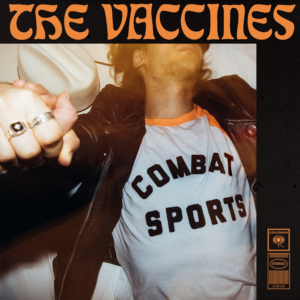 The Vaccines: Combat Sports. (Sony). This super-hip British alt-rock collective’s breakneck fourth LP meshes their inherent punkish charm with crunchy pop values and fine production luster, from the echo-laden suggestion to “Put It on a T-Shirt” to the instantly singable declaration of “Your Love Is My Favourite Band” to the organ-driven tongue-in-chic nod of “Rolling Stones.” Call it The Vaccines’ version of The Wall of Sound. “We’ve always flirted with that sound,” vocalist/rhythm guitarist Justin Young confirmed with me back in March. “The whole record is an homage to many of the great rock & roll singers we all know, and I wrote a lot of it on piano to infuse these songs with a lot of those singer/songwriter-y elements. I also like making music that’s somewhat deceptive, where you don’t realize how colorful it really is until you listen to it on headphones. Then you find there are more layers and more nuances in each song.” Hands down, Combat Sports gets this year’s Gold Medal for Catchiest Deep-Rooted Sonic Inoculations.
The Vaccines: Combat Sports. (Sony). This super-hip British alt-rock collective’s breakneck fourth LP meshes their inherent punkish charm with crunchy pop values and fine production luster, from the echo-laden suggestion to “Put It on a T-Shirt” to the instantly singable declaration of “Your Love Is My Favourite Band” to the organ-driven tongue-in-chic nod of “Rolling Stones.” Call it The Vaccines’ version of The Wall of Sound. “We’ve always flirted with that sound,” vocalist/rhythm guitarist Justin Young confirmed with me back in March. “The whole record is an homage to many of the great rock & roll singers we all know, and I wrote a lot of it on piano to infuse these songs with a lot of those singer/songwriter-y elements. I also like making music that’s somewhat deceptive, where you don’t realize how colorful it really is until you listen to it on headphones. Then you find there are more layers and more nuances in each song.” Hands down, Combat Sports gets this year’s Gold Medal for Catchiest Deep-Rooted Sonic Inoculations.
 Yo La Tengo: There’s a Riot Going On. (Matador). Mercurial post-punk trio from Hoboken, New Jersey continue to nimbly walk the sonic tightrope between distortion and melody. From the otherworldly fuzztone wash of “For You Too” to the shimmery Beach Boys-esque mysticism of “Dream Dream Away” to the percussive bird’s-eye-view jangle of “Above the Sound,” YLT tip the scales more on the side of ethereal thrash — and my ears couldn’t be happier at the prospect. “Living with this music for a long time before we recorded it helped inform the words we spoke and the lyrics we came up with for each song,” bassist James McNew told me back in February. “It gave us all an unspoken, unconscious link to the spirit of each song, which enabled us to connect with each of them a little more deeply and figure out the best sequence to present them in.” Let’s hope this raucous aural Riot keeps going on and on until the very last ember dims.
Yo La Tengo: There’s a Riot Going On. (Matador). Mercurial post-punk trio from Hoboken, New Jersey continue to nimbly walk the sonic tightrope between distortion and melody. From the otherworldly fuzztone wash of “For You Too” to the shimmery Beach Boys-esque mysticism of “Dream Dream Away” to the percussive bird’s-eye-view jangle of “Above the Sound,” YLT tip the scales more on the side of ethereal thrash — and my ears couldn’t be happier at the prospect. “Living with this music for a long time before we recorded it helped inform the words we spoke and the lyrics we came up with for each song,” bassist James McNew told me back in February. “It gave us all an unspoken, unconscious link to the spirit of each song, which enabled us to connect with each of them a little more deeply and figure out the best sequence to present them in.” Let’s hope this raucous aural Riot keeps going on and on until the very last ember dims.
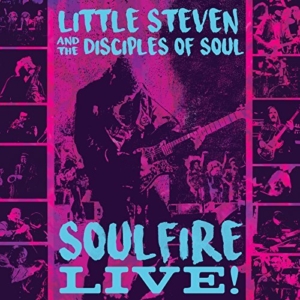 Little Steven and The Disciples of Soul: Soulfire Live! (UMe). As curated directly from the mouth, mind, fingers, heart, and soul of the professor of rock & roll himself, Steven Van Zandt, Soulfire Live! is an incendiary 24-track chronicle of Little Steven and The Disciples of Soul’s sold-out tour in support of his triumphant 2017 solo studio release, Soulfire. The man and his smoking-hot all-stalwart band truly put the rubber to the road to breathe life into such sizzling-hot Soulfire tracks like “St. Valentine’s Day” and “Standing in the Line of Fire,” alongside some of his own select, classic catalog offerings (“I Am A Patriot,” “Leonard Peltier”) and choice covers (“Groovin’ Is Easy,” “Bitter Fruit”). In short, Soulfire Live! is an aurally rewarding lesson plan rich with teachable moments. “Even I realized I gotta go back to school here — and that meant I had to go back to the roots, and back to the beginning,” Little Steven taught, er, told me back in March. “We’ve always been very conscious of our gratitude to all these great artists, and conscious of wanting to turn people onto them when they’re still so great. Our intention in working with these pioneer artists is simple: We’re going to turn a new generation onto their previous work.” Based on all that lives and breathes within these Live! grooves, you just might find yourself learning more from a three-minute record, baby, than you could in any other kind of school. Class dismissed!
Little Steven and The Disciples of Soul: Soulfire Live! (UMe). As curated directly from the mouth, mind, fingers, heart, and soul of the professor of rock & roll himself, Steven Van Zandt, Soulfire Live! is an incendiary 24-track chronicle of Little Steven and The Disciples of Soul’s sold-out tour in support of his triumphant 2017 solo studio release, Soulfire. The man and his smoking-hot all-stalwart band truly put the rubber to the road to breathe life into such sizzling-hot Soulfire tracks like “St. Valentine’s Day” and “Standing in the Line of Fire,” alongside some of his own select, classic catalog offerings (“I Am A Patriot,” “Leonard Peltier”) and choice covers (“Groovin’ Is Easy,” “Bitter Fruit”). In short, Soulfire Live! is an aurally rewarding lesson plan rich with teachable moments. “Even I realized I gotta go back to school here — and that meant I had to go back to the roots, and back to the beginning,” Little Steven taught, er, told me back in March. “We’ve always been very conscious of our gratitude to all these great artists, and conscious of wanting to turn people onto them when they’re still so great. Our intention in working with these pioneer artists is simple: We’re going to turn a new generation onto their previous work.” Based on all that lives and breathes within these Live! grooves, you just might find yourself learning more from a three-minute record, baby, than you could in any other kind of school. Class dismissed!
 The Crystal Method: The Trip Home. (Tiny E). Undeterred by the recent departure of his longtime creative partner Ken Jordan, Scott Kirkland rebooted the pioneering electronic-music collective The Crystal Method mostly on his own (albeit with a little help from a few collaborative friends) for the aptly titled The Trip Home. From the shuffle-beat reggae-fied burble of “Holy Arp” to the literal tsunami of sound that embodies “Turbulence” to the bouillabaisse of emotions stirred up in “There’s a Difference,” Kirkland shows his mastery at knowing exactly how to let a wide stereo soundstage breathe. “I didn’t want to clutter things up too much this time,” Kirkland told me back in October, “so this is more of my anti-EDM album, if you will. I really wanted to make an album that was cinematic, had a bit of a narrative, and told a story. This is the first step for the next few years of the band. The evolution is here, and I’m embracing it and enjoying the process.” Indeed, The Trip Home’s forward-leaning coordinates pinpoint a quite bright future for The Crystal Method’s sonic madness.
The Crystal Method: The Trip Home. (Tiny E). Undeterred by the recent departure of his longtime creative partner Ken Jordan, Scott Kirkland rebooted the pioneering electronic-music collective The Crystal Method mostly on his own (albeit with a little help from a few collaborative friends) for the aptly titled The Trip Home. From the shuffle-beat reggae-fied burble of “Holy Arp” to the literal tsunami of sound that embodies “Turbulence” to the bouillabaisse of emotions stirred up in “There’s a Difference,” Kirkland shows his mastery at knowing exactly how to let a wide stereo soundstage breathe. “I didn’t want to clutter things up too much this time,” Kirkland told me back in October, “so this is more of my anti-EDM album, if you will. I really wanted to make an album that was cinematic, had a bit of a narrative, and told a story. This is the first step for the next few years of the band. The evolution is here, and I’m embracing it and enjoying the process.” Indeed, The Trip Home’s forward-leaning coordinates pinpoint a quite bright future for The Crystal Method’s sonic madness.
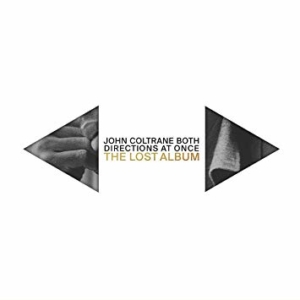 John Coltrane: Both Directions at Once – The Lost Album. (Verve). Certain musical genius knows no bounds, which is one reason why I’m more-than-somewhat partial to listening to any and all output from the likes of Jimi Hendrix, Bob Dylan, Miles Davis, and John Coltrane, whether it be via unreleased studio sessions or long-lost live recordings. In the current case of the ever-tortured saxophonist also known as the mighty Trane, we now have this newly unearthed studio gem to wrap our ears around. Taken from a shelved March 6, 1963 session at Rudy Van Gelder’s famed Englewood Cliffs, New Jersey studio with pianist McCoy Tyner, drummer Elvin Jones, and double bassist Jimmy Garrison in tow, Both Directions at Once is the literal definition of “tight but loose.” From the intuitive interplay and untethered experimentation of “Untitled Original 11383 (Take 1)” to the unhurried, unfolding squeal and squall of “Slow Blues,” Trane yet again shows how he was always on the right musical track. No matter which Direction you look, Coltrane’s creative signpost forever reads, “full steam ahead.”
John Coltrane: Both Directions at Once – The Lost Album. (Verve). Certain musical genius knows no bounds, which is one reason why I’m more-than-somewhat partial to listening to any and all output from the likes of Jimi Hendrix, Bob Dylan, Miles Davis, and John Coltrane, whether it be via unreleased studio sessions or long-lost live recordings. In the current case of the ever-tortured saxophonist also known as the mighty Trane, we now have this newly unearthed studio gem to wrap our ears around. Taken from a shelved March 6, 1963 session at Rudy Van Gelder’s famed Englewood Cliffs, New Jersey studio with pianist McCoy Tyner, drummer Elvin Jones, and double bassist Jimmy Garrison in tow, Both Directions at Once is the literal definition of “tight but loose.” From the intuitive interplay and untethered experimentation of “Untitled Original 11383 (Take 1)” to the unhurried, unfolding squeal and squall of “Slow Blues,” Trane yet again shows how he was always on the right musical track. No matter which Direction you look, Coltrane’s creative signpost forever reads, “full steam ahead.”
14. Neil & Liam Finn: Lightsleeper. (Lester/PIAS). Perhaps unjustly overshadowed by Neil having joined the most recent world-turning live iteration of Fleetwood Mac earlier this year, Lightsleeper is fine sonic evidence of how certain songwriting DNA doesn’t fall too far from the New Zealand born-and-bred tree. The album marries papa Neil’s inherent melodic knack with son Liam’s slightly more off-kilter instincts, from the understated lull of “Anger Plays a Part” to the shimmering Greek chorus of “Back to Life” to the epic experimental nature-funk burble of “Where’s My Room?” (the latter of which wouldn’t necessarily be out of place on a 21st century rejiggering of The White Album). “In the end, we got attracted to these things that we were jamming that were quite lyrical and almost cinematic. So, it turned into ‘sultry lounge’ — that’s what we thought of as our genre,” observed Neil. “A lot of the time. I was trying to conjure up the feeling of that sort of almost half-state you’re in as you’re about to go to sleep. I like the idea of making music that inhabits that space, so you don’t know whether it’s real or it’s synthesized,” added Liam. It’s only natural that Lightsleeper is sure to keep you awake and alert during many aurally adventurous days and nights ahead.
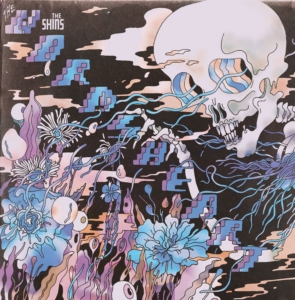 13. The Shins: The Worm’s Heart. (Columbia). How do you make a seamless album sound even better? If you’re James Mercer of indie rock/dream pop titans The Shins, you literally flip the script by reworking all 11 songs on your 2017 release, Heartworms, with completely all-new arrangements for a wholly re-recorded role-reversal album called (naturally) The Worm’s Heart. If Heartworms was like the Robbie Robertson and The Band version of these tracks with additional ’80s flourishes, then The Worm’s Heart is more like the Lou Reed and The Velvet Underground version. Heart works in the opposite running order, with “The Fear,” the last track of the previous album, now appearing as the first, with the remainder of the songs all following suit — along with having the word “Flipped” added to the end of their respective titles. “We were all pretty surprised at how well each one worked in the different format,” Mercer told me back in January. “Some of them did take a little exploration of, ‘Okay, how do we find what’s going to make this one pop in the way we want it to?’ There was a period of time where we did actually consider swapping out some of the versions, but I wanted each of these albums to be of equal value.” From the jangle-rock switcheroo of “Name for You” to the string section added to the front end of “Dead Alive,” The Worm’s Heart is the Black Mirror equivalent of an already sonically stunning album.
13. The Shins: The Worm’s Heart. (Columbia). How do you make a seamless album sound even better? If you’re James Mercer of indie rock/dream pop titans The Shins, you literally flip the script by reworking all 11 songs on your 2017 release, Heartworms, with completely all-new arrangements for a wholly re-recorded role-reversal album called (naturally) The Worm’s Heart. If Heartworms was like the Robbie Robertson and The Band version of these tracks with additional ’80s flourishes, then The Worm’s Heart is more like the Lou Reed and The Velvet Underground version. Heart works in the opposite running order, with “The Fear,” the last track of the previous album, now appearing as the first, with the remainder of the songs all following suit — along with having the word “Flipped” added to the end of their respective titles. “We were all pretty surprised at how well each one worked in the different format,” Mercer told me back in January. “Some of them did take a little exploration of, ‘Okay, how do we find what’s going to make this one pop in the way we want it to?’ There was a period of time where we did actually consider swapping out some of the versions, but I wanted each of these albums to be of equal value.” From the jangle-rock switcheroo of “Name for You” to the string section added to the front end of “Dead Alive,” The Worm’s Heart is the Black Mirror equivalent of an already sonically stunning album.
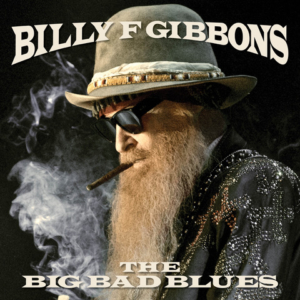 Billy Gibbons: The Big Bad Blues. (Concord). The right Rev. Billy F Gibbons takes his second full-on solo excursion outside the perennial ZZ Top troika to dive even deeper into the blues-delta duende that’s been in his blood seemingly since birth. From the echo-laden vocal charge of his cover of Muddy Waters’ “Rollin’ and Tumblin’” to the burnished gnarl and growl of “Missin’ Yo’ Kissin’” to the guttural leer ’n’ sneer of “Mo’ Slower Blues,” Big Bad Blues is one badass homebrewed stew. “The shift back to the blues is a natural. It’s something which our followers can enjoy with the satisfaction of experiencing the roots tradition and, at the same time, feeling the richness of stretching the art form,” Gibbons observed in the most Gibbonsesque way possible. “There’s something very primordial within the art form. Nobody gets away from the infectious allure of those straight-ahead licks!” Without a doubt, Gibbons is one big, bad, nationwide blues-huggin’ mofo. Have mercy!
Billy Gibbons: The Big Bad Blues. (Concord). The right Rev. Billy F Gibbons takes his second full-on solo excursion outside the perennial ZZ Top troika to dive even deeper into the blues-delta duende that’s been in his blood seemingly since birth. From the echo-laden vocal charge of his cover of Muddy Waters’ “Rollin’ and Tumblin’” to the burnished gnarl and growl of “Missin’ Yo’ Kissin’” to the guttural leer ’n’ sneer of “Mo’ Slower Blues,” Big Bad Blues is one badass homebrewed stew. “The shift back to the blues is a natural. It’s something which our followers can enjoy with the satisfaction of experiencing the roots tradition and, at the same time, feeling the richness of stretching the art form,” Gibbons observed in the most Gibbonsesque way possible. “There’s something very primordial within the art form. Nobody gets away from the infectious allure of those straight-ahead licks!” Without a doubt, Gibbons is one big, bad, nationwide blues-huggin’ mofo. Have mercy!
 Riverside: Wasteland. (InsideOut). Great tragedy sometimes begets great music. Such is the case for Riverside, the Warsaw, Poland-based progressive collective who tragically lost guitarist Piotr Grudziński to sudden cardiac arrest in February 2016. Rather than closing up shop, Riverside regrouped as a trio and channeled their understandable grief into aural positivity. From the self-evident whisper-to-a-scream yearning of “Lament” to the touching thrust of “Vale of Tears” to the cleansing wash of “River Down Below,” Wasteland deftly walks the tightrope between expressing anguish and discovering rebirth. “I really wanted to create something like a self-help book — how to change your life and how to change yourself into a better person, or something like that,” admitted bassist/vocalist Mariusz Duda. “I wanted that kind of theme for the album, to create something that has the power that forces you to at least think about your life, about something that you can change for better.” For anyone experiencing a state of personal paralysis, Wasteland shines a bright light on how to take those next crucial steps for moving forward.
Riverside: Wasteland. (InsideOut). Great tragedy sometimes begets great music. Such is the case for Riverside, the Warsaw, Poland-based progressive collective who tragically lost guitarist Piotr Grudziński to sudden cardiac arrest in February 2016. Rather than closing up shop, Riverside regrouped as a trio and channeled their understandable grief into aural positivity. From the self-evident whisper-to-a-scream yearning of “Lament” to the touching thrust of “Vale of Tears” to the cleansing wash of “River Down Below,” Wasteland deftly walks the tightrope between expressing anguish and discovering rebirth. “I really wanted to create something like a self-help book — how to change your life and how to change yourself into a better person, or something like that,” admitted bassist/vocalist Mariusz Duda. “I wanted that kind of theme for the album, to create something that has the power that forces you to at least think about your life, about something that you can change for better.” For anyone experiencing a state of personal paralysis, Wasteland shines a bright light on how to take those next crucial steps for moving forward.
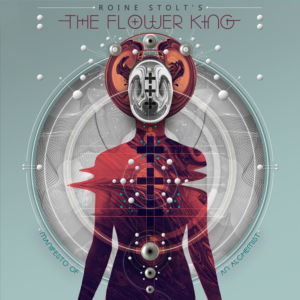 Roine Stolt’s The Flower King: Manifesto of an Alchemist. (InsideOut). The uber-progressive Swedish guitarist/vocalist semi-steps out of The Flower Kings fold to deliver 70 unrepentant minutes of (r)evolutionary sounds both old and new. From the harmonic stereo soundfield challenges of the cautionary warning shot of “Lost America” to the wah-funk fusion cauldron that comprises “The Alchemist” to the many Yes-and-Zappa-esque improv-inspired movements of “High Road,” Stolt pushes the aural envelope yet another notch further. “When I record and mix, I want everything to sound as hi-fi as possible,” Stolt told me back in October. “But some of the sounds you hear on this album come from demos I did some years ago, and other bits come from things I did even before I started The Flower Kings almost 25 years ago. In some ways it’s odd, but I wanted to try a different way of making an album. I wanted to try something new.” Mission accomplished, Roine, for this Manifesto is transatlantic time-traveling sonic alchemy at its abject finest.
Roine Stolt’s The Flower King: Manifesto of an Alchemist. (InsideOut). The uber-progressive Swedish guitarist/vocalist semi-steps out of The Flower Kings fold to deliver 70 unrepentant minutes of (r)evolutionary sounds both old and new. From the harmonic stereo soundfield challenges of the cautionary warning shot of “Lost America” to the wah-funk fusion cauldron that comprises “The Alchemist” to the many Yes-and-Zappa-esque improv-inspired movements of “High Road,” Stolt pushes the aural envelope yet another notch further. “When I record and mix, I want everything to sound as hi-fi as possible,” Stolt told me back in October. “But some of the sounds you hear on this album come from demos I did some years ago, and other bits come from things I did even before I started The Flower Kings almost 25 years ago. In some ways it’s odd, but I wanted to try a different way of making an album. I wanted to try something new.” Mission accomplished, Roine, for this Manifesto is transatlantic time-traveling sonic alchemy at its abject finest.
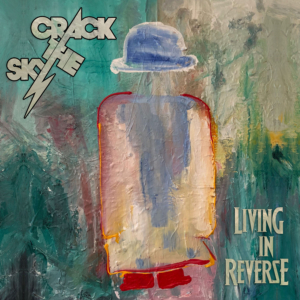 Crack the Sky: Living in Reverse. (Loud & Proud). This veteran Weirton, West Virginia-bred outfit continue to set themselves apart from the standard rock pack via an inherent knack for knowing how to incorporate the best of their patented, melodically driven Crack crunch with ever-evolving sonic ideas and inventive, hook-laden sound palettes. Galvanizing Living in Reverse cuts like the full-on groundswell of “Raining Rain,” the modernized new-wave sonic uniform that envelops “Jacket,” and the spoken-word seduction of “Home Tonight” all match up quite beautifully with the concurrent, recast Crackology versions of Crack classics like the one-two punch ’n’ crunch of “Hold On” and “Surf City” alongside the overdriven depth of “Skin Deep” and the reactor-fueled crackle of “Nuclear Apathy” (the latter track as relevant today as when it was first written and performed in 1978). “We’ve been going back in time to try and find ourselves, even while we’ve been looking ahead to the future,” guitarist/producer Rick Witkowski explained to me back in May. “On our first few albums, we were labeled as a guitar-driven, classic-rock, prog-rock kind of band, but each song on this album has its own unique identity. Basically, we were on an audio exploratory mission.” Adds lead vocalist/chief songwriter John Palumbo, “What happens with all of the songs is I’ll deliver a complete track with everything on it, the guys go ahead and tear them apart in the studio, and then they’ll just start to color things. It’s a great way to work because everybody trusts everybody else — and that’s key.” Sky’s the limit, as that Crack level of commitment to teamwork keeps Reverse moving forward upon each successive listen.
Crack the Sky: Living in Reverse. (Loud & Proud). This veteran Weirton, West Virginia-bred outfit continue to set themselves apart from the standard rock pack via an inherent knack for knowing how to incorporate the best of their patented, melodically driven Crack crunch with ever-evolving sonic ideas and inventive, hook-laden sound palettes. Galvanizing Living in Reverse cuts like the full-on groundswell of “Raining Rain,” the modernized new-wave sonic uniform that envelops “Jacket,” and the spoken-word seduction of “Home Tonight” all match up quite beautifully with the concurrent, recast Crackology versions of Crack classics like the one-two punch ’n’ crunch of “Hold On” and “Surf City” alongside the overdriven depth of “Skin Deep” and the reactor-fueled crackle of “Nuclear Apathy” (the latter track as relevant today as when it was first written and performed in 1978). “We’ve been going back in time to try and find ourselves, even while we’ve been looking ahead to the future,” guitarist/producer Rick Witkowski explained to me back in May. “On our first few albums, we were labeled as a guitar-driven, classic-rock, prog-rock kind of band, but each song on this album has its own unique identity. Basically, we were on an audio exploratory mission.” Adds lead vocalist/chief songwriter John Palumbo, “What happens with all of the songs is I’ll deliver a complete track with everything on it, the guys go ahead and tear them apart in the studio, and then they’ll just start to color things. It’s a great way to work because everybody trusts everybody else — and that’s key.” Sky’s the limit, as that Crack level of commitment to teamwork keeps Reverse moving forward upon each successive listen.
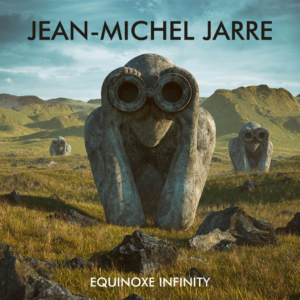 Jean-Michel Jarre: Equinoxe Infinity. (Astralwerks/Sony Music). If Klaus Schulze is the consigliere of electronic music, then Jean-Michel Jarre is surely The Godfather. The Lyon, France-born JMJ, as he’s also known, further cements his standing with the sonic-swath-sweeping Equinoxe Infinity, which was not-so-coincidentally released 40 years to the day following his groundbreaking 1978 sequencer-and-synth masterstroke, Équinoxe. From the skittery shot across the AI bow of “Machines Are Learning” to the swirling burbles of “Flying Totems” to the shimmering percussion-and-strings combo of “Robots Don’t Cry,” JMJ remains on the cutting edge of electronic exploration. “It’s important to educate the audience to a different way of listening to music than the usual, day-to-day ways of doing it,” Jarre told me back in October. “This is why I’m very much interested these days in what I call ‘multi-mono’ sources, which is actually what surround sound gives to you. And I’m also into binaural technology. It’s interesting as something that recreates what the human ear, and the human listening conditions, are. Finding new options for adventurous listening is exactly the reason I’m doing what I do.” Indeed, JMJ’s far-reaching construct of Infinity clearly knows no aural bounds.
Jean-Michel Jarre: Equinoxe Infinity. (Astralwerks/Sony Music). If Klaus Schulze is the consigliere of electronic music, then Jean-Michel Jarre is surely The Godfather. The Lyon, France-born JMJ, as he’s also known, further cements his standing with the sonic-swath-sweeping Equinoxe Infinity, which was not-so-coincidentally released 40 years to the day following his groundbreaking 1978 sequencer-and-synth masterstroke, Équinoxe. From the skittery shot across the AI bow of “Machines Are Learning” to the swirling burbles of “Flying Totems” to the shimmering percussion-and-strings combo of “Robots Don’t Cry,” JMJ remains on the cutting edge of electronic exploration. “It’s important to educate the audience to a different way of listening to music than the usual, day-to-day ways of doing it,” Jarre told me back in October. “This is why I’m very much interested these days in what I call ‘multi-mono’ sources, which is actually what surround sound gives to you. And I’m also into binaural technology. It’s interesting as something that recreates what the human ear, and the human listening conditions, are. Finding new options for adventurous listening is exactly the reason I’m doing what I do.” Indeed, JMJ’s far-reaching construct of Infinity clearly knows no aural bounds.
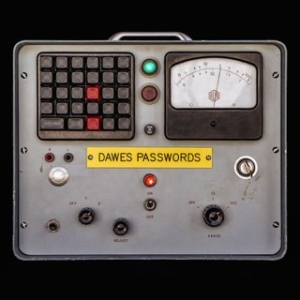 Dawes: Passwords. (Hub). L.A.-bred indie-rock stalwarts continue their nonstop harmonious run with the fine, fine sixth LP Passwords. From the Doobies-esque harmonies of “Feed the Fire” to the subtle folkie absolution of “Crack the Case” to the burnished rock gnarl slowly uncoiled in “Living in the Future,” Dawes is the sonic blueprint of what would happen if all your favorite bands were fused together to create something new and unique with an unabashed nod to the familiar in all the right ways. “Especially with these last three records, I wanted to ask how do we figure out a way to let these songs represent the whole picture?” observed guitarist/vocalist Taylor Goldsmith. “When an album is all light and funny, it’s like, ‘Well that’s not the whole picture,’ and when the songs are all sad and serious, that’s not a full human being either. We’re trying to make sure that it’s kind of giving a fuller picture of what life feels like.” Passwords is a complete collection of pure modern poetry set forth in aurally alluring motion.
Dawes: Passwords. (Hub). L.A.-bred indie-rock stalwarts continue their nonstop harmonious run with the fine, fine sixth LP Passwords. From the Doobies-esque harmonies of “Feed the Fire” to the subtle folkie absolution of “Crack the Case” to the burnished rock gnarl slowly uncoiled in “Living in the Future,” Dawes is the sonic blueprint of what would happen if all your favorite bands were fused together to create something new and unique with an unabashed nod to the familiar in all the right ways. “Especially with these last three records, I wanted to ask how do we figure out a way to let these songs represent the whole picture?” observed guitarist/vocalist Taylor Goldsmith. “When an album is all light and funny, it’s like, ‘Well that’s not the whole picture,’ and when the songs are all sad and serious, that’s not a full human being either. We’re trying to make sure that it’s kind of giving a fuller picture of what life feels like.” Passwords is a complete collection of pure modern poetry set forth in aurally alluring motion.
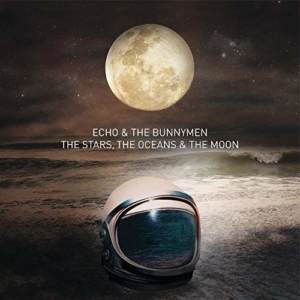 Echo & The Bunnymen: The Stars, The Ocean & The Moon. (BMG). Sometimes it takes years before lead vocalists fully grow into their truest, most expressive singing voice, and that’s exactly what’s happened with Echo & The Bunnymen frontman Ian McCulloch. As good, edgy, and emotive as he was during the Liverpool-bred post-punk band’s ’80s heyday, he’s even more nuanced and affecting these days, as evidenced by the 13 revelatory classics both recast and transformed on The Stars, The Ocean & The Moon (in addition to a pair of whip-smart originals, I might add). Whether it’s the wizened world weariness of “Bring on the Dancing Horses,” the string-drenched pleading of “Nothing Lasts Forever,” the piano-driven elegy of “Ocean Rain,” or the sophisticated sneer of “The Cutter,” McCulloch has since ascended to heights perhaps not foreseen by even the man himself. “It’s art, innit? I really do feel like I’ve reclaimed some songs I never felt I sang to the best of my ability before,” McCulloch told me back in July (right before he invited me in his you-cannot-say-no fashion to join him for a shared libation, locale TBD). “There have been four people in my life who told me songs I wrote kept them from killing themselves. That’s more important to me than just about anything. And I’ve only told you that, mate. I’ve never shared that with any other journalist before.” Truly honored to share that moment, Ian. Supersonic sugar kisses have never tasted, or sounded, so sweet.
Echo & The Bunnymen: The Stars, The Ocean & The Moon. (BMG). Sometimes it takes years before lead vocalists fully grow into their truest, most expressive singing voice, and that’s exactly what’s happened with Echo & The Bunnymen frontman Ian McCulloch. As good, edgy, and emotive as he was during the Liverpool-bred post-punk band’s ’80s heyday, he’s even more nuanced and affecting these days, as evidenced by the 13 revelatory classics both recast and transformed on The Stars, The Ocean & The Moon (in addition to a pair of whip-smart originals, I might add). Whether it’s the wizened world weariness of “Bring on the Dancing Horses,” the string-drenched pleading of “Nothing Lasts Forever,” the piano-driven elegy of “Ocean Rain,” or the sophisticated sneer of “The Cutter,” McCulloch has since ascended to heights perhaps not foreseen by even the man himself. “It’s art, innit? I really do feel like I’ve reclaimed some songs I never felt I sang to the best of my ability before,” McCulloch told me back in July (right before he invited me in his you-cannot-say-no fashion to join him for a shared libation, locale TBD). “There have been four people in my life who told me songs I wrote kept them from killing themselves. That’s more important to me than just about anything. And I’ve only told you that, mate. I’ve never shared that with any other journalist before.” Truly honored to share that moment, Ian. Supersonic sugar kisses have never tasted, or sounded, so sweet.
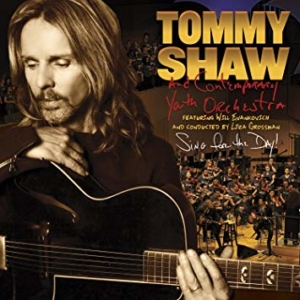 Tommy Shaw and Contemporary Youth Orchestra: Sing for the Day! (Eagle Rock). Styx guitarist/vocalist Shaw briefly steps out of the fold to concoct a rousing, mostly acoustified solo turn with the Cleveland-based Contemporary Youth Orchestra (a.k.a. CYO), under the direction of principal conductor/founder Liza Grossman. Shaw shakes up his one-man brand of magic right alongside guitarist/musical director Will Evankovich, as backed by the next generation of the finest high-school-aged musicians in Ohio. From the moving orchestral flourishes that opened the night with “Overture” to the perfect blend of artist, CYO, and chorus on a fully re-imagined “Blue Collar Man” to the sweet banjo accompaniment leading “I’ll Be Coming Home” to the moving “duel” Shaw entered into with returning CYO alumni violinist Lavinia Pavlish on “Renegade,” SFTD! delivers something for everyone. In fact, the mix is so good at times that it brings to mind the way The Moody Blues were so perfectly in sync with the London Symphony Orchestra on their benchmark 1967 release, Days of Future Passed. “It was so much bigger and more everlasting than any of us imagined it would be,” Shaw told me backstage, almost immediately after the performance itself (which took place in May 2016, but remained unreleased until this year). “We were all so immersed in the work of it — the preparation, getting all the arrangements right, and making all the changes that kept elevating it.” Added Shaw’s main onstage guitar foil Evankovich, “Tommy and I sailed our boats on what was an ocean of sound, ebbing and flowing. When you negotiate this symbiotic relationship of playing with an orchestra, the end result is remarkable. We were left saying, ‘Wow, did that really just happen?’” CYO’s Grossman gets the final word: “I thought the whole night was incredible. The vibe was great, the kids were on it, and I felt very connected to Tommy and Will. And I was in love with the chorus too! I never heard them sing like that before.” From top-end to song tails, Sing for the Day! will put a cheerful singalong kinda song (or two, or three) in your heart and soul for many days to come.
Tommy Shaw and Contemporary Youth Orchestra: Sing for the Day! (Eagle Rock). Styx guitarist/vocalist Shaw briefly steps out of the fold to concoct a rousing, mostly acoustified solo turn with the Cleveland-based Contemporary Youth Orchestra (a.k.a. CYO), under the direction of principal conductor/founder Liza Grossman. Shaw shakes up his one-man brand of magic right alongside guitarist/musical director Will Evankovich, as backed by the next generation of the finest high-school-aged musicians in Ohio. From the moving orchestral flourishes that opened the night with “Overture” to the perfect blend of artist, CYO, and chorus on a fully re-imagined “Blue Collar Man” to the sweet banjo accompaniment leading “I’ll Be Coming Home” to the moving “duel” Shaw entered into with returning CYO alumni violinist Lavinia Pavlish on “Renegade,” SFTD! delivers something for everyone. In fact, the mix is so good at times that it brings to mind the way The Moody Blues were so perfectly in sync with the London Symphony Orchestra on their benchmark 1967 release, Days of Future Passed. “It was so much bigger and more everlasting than any of us imagined it would be,” Shaw told me backstage, almost immediately after the performance itself (which took place in May 2016, but remained unreleased until this year). “We were all so immersed in the work of it — the preparation, getting all the arrangements right, and making all the changes that kept elevating it.” Added Shaw’s main onstage guitar foil Evankovich, “Tommy and I sailed our boats on what was an ocean of sound, ebbing and flowing. When you negotiate this symbiotic relationship of playing with an orchestra, the end result is remarkable. We were left saying, ‘Wow, did that really just happen?’” CYO’s Grossman gets the final word: “I thought the whole night was incredible. The vibe was great, the kids were on it, and I felt very connected to Tommy and Will. And I was in love with the chorus too! I never heard them sing like that before.” From top-end to song tails, Sing for the Day! will put a cheerful singalong kinda song (or two, or three) in your heart and soul for many days to come.
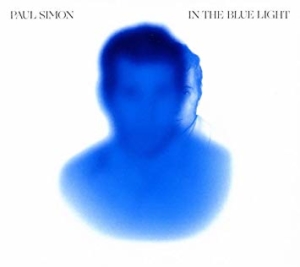 Paul Simon: In the Blue Light. (Legacy). I’m a firm believer that songs, like the artists who create them, evolve over time. They may mean one thing in those initial moments when they’ve first been written, performed, and recorded, they change even further the more they’re played and felt out onstage, and some of them ultimately transform into something else entirely as the clock moves ever forward. There could be no better example of putting this theory into action than Paul Simon’s In the Blue Light, the lauded singer/songwriter’s recasting of 10 deep cuts from his storied oeuvre. “This album consists of songs that I thought were almost right, or were odd enough as to be overlooked the first time around,” Simon (whom The SoundBard happens to share a birthday with, BTW) details in the album’s liner notes. “Re-doing arrangements, harmonic structures, and lyrics that didn’t make their meaning clear, gave me time to clarify in my own head what I wanted to say, or realize what I was thinking and make it more easily understood.” From the strings/woodwinds/horns-enhanced dramatic push-pull of “Can’t Run But” to the finger-snapping boogie-woogie echo of “One Man’s Ceiling Is Another Man’s Floor” to the funky N’awlins honk of “Pigs, Sheep and Wolves,” In the Blue Light shines an unyielding beacon on the fact that great songs nurtured by insightful, always searching career artists will only continue to grow to new heights.
Paul Simon: In the Blue Light. (Legacy). I’m a firm believer that songs, like the artists who create them, evolve over time. They may mean one thing in those initial moments when they’ve first been written, performed, and recorded, they change even further the more they’re played and felt out onstage, and some of them ultimately transform into something else entirely as the clock moves ever forward. There could be no better example of putting this theory into action than Paul Simon’s In the Blue Light, the lauded singer/songwriter’s recasting of 10 deep cuts from his storied oeuvre. “This album consists of songs that I thought were almost right, or were odd enough as to be overlooked the first time around,” Simon (whom The SoundBard happens to share a birthday with, BTW) details in the album’s liner notes. “Re-doing arrangements, harmonic structures, and lyrics that didn’t make their meaning clear, gave me time to clarify in my own head what I wanted to say, or realize what I was thinking and make it more easily understood.” From the strings/woodwinds/horns-enhanced dramatic push-pull of “Can’t Run But” to the finger-snapping boogie-woogie echo of “One Man’s Ceiling Is Another Man’s Floor” to the funky N’awlins honk of “Pigs, Sheep and Wolves,” In the Blue Light shines an unyielding beacon on the fact that great songs nurtured by insightful, always searching career artists will only continue to grow to new heights.
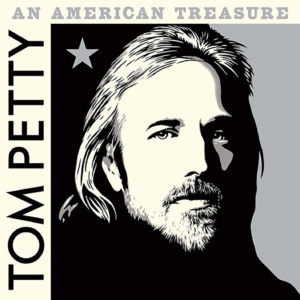 Tom Petty: An American Treasure. (Reprise). Could there be a better, more spot-on three-word assessment of both a man and his life’s work than the title of this collection? As lovingly culled by Tom Petty’s family, production team, and his once-and-forever bandmates in The Heartbreakers, this 6LP/4CD collection (best heard on vinyl, hands down!) shares much of the sonic story our hearts, souls, and ears already know, in addition to furthering the tale via many heretofore unplucked gems. From the rattle and hum of the unreleased chug-along tandem of “Keep a Little Soul” and “Keeping Me Alive” to the alternate thrust of a recast, less fussy “Rebels” to the stripped back ’n’ acoustified live defiance of “I Won’t Back Down” to the blisteringly intuitive interchange of “Two Men Talking,” An American Treasure reinforces the best of everything we already know, and enhances so much of what we’re only now just learning (and what we will hopefully, likely glean if future archival releases emerge from the expansive TP vault). “What’s always driven Tom and these guys is the creative process. And they’ve gotta stay creative, because it’s in their DNA,” TP producer/engineer/aural confidante Ryan Ulyate told me in 2014, while we were discussing what turned out to be the final TP&THB studio album, Hypnotic Eye. Tom himself examined his creative process when he and I sat down together at his house in Malibu, California in 2010: “I think I knew early on that songwriting was what I wanted to do, because before I was really adept at the guitar, I started to write my own things with the few chords that I knew. But the music came from another place. It just appeared. And I firmly believe that: It just comes, but you have to set yourself up to receive the signal. You’ve got to help it along. I don’t want to analyze it too much, or then it’ll be gone.” Thanks to the endlessly rewarding breadth found within the grooves of An American Treasure, the songwriting legacy of the late, forever great Thomas Earl Petty won’t be backed down upon anytime soon — if ever.
Tom Petty: An American Treasure. (Reprise). Could there be a better, more spot-on three-word assessment of both a man and his life’s work than the title of this collection? As lovingly culled by Tom Petty’s family, production team, and his once-and-forever bandmates in The Heartbreakers, this 6LP/4CD collection (best heard on vinyl, hands down!) shares much of the sonic story our hearts, souls, and ears already know, in addition to furthering the tale via many heretofore unplucked gems. From the rattle and hum of the unreleased chug-along tandem of “Keep a Little Soul” and “Keeping Me Alive” to the alternate thrust of a recast, less fussy “Rebels” to the stripped back ’n’ acoustified live defiance of “I Won’t Back Down” to the blisteringly intuitive interchange of “Two Men Talking,” An American Treasure reinforces the best of everything we already know, and enhances so much of what we’re only now just learning (and what we will hopefully, likely glean if future archival releases emerge from the expansive TP vault). “What’s always driven Tom and these guys is the creative process. And they’ve gotta stay creative, because it’s in their DNA,” TP producer/engineer/aural confidante Ryan Ulyate told me in 2014, while we were discussing what turned out to be the final TP&THB studio album, Hypnotic Eye. Tom himself examined his creative process when he and I sat down together at his house in Malibu, California in 2010: “I think I knew early on that songwriting was what I wanted to do, because before I was really adept at the guitar, I started to write my own things with the few chords that I knew. But the music came from another place. It just appeared. And I firmly believe that: It just comes, but you have to set yourself up to receive the signal. You’ve got to help it along. I don’t want to analyze it too much, or then it’ll be gone.” Thanks to the endlessly rewarding breadth found within the grooves of An American Treasure, the songwriting legacy of the late, forever great Thomas Earl Petty won’t be backed down upon anytime soon — if ever.
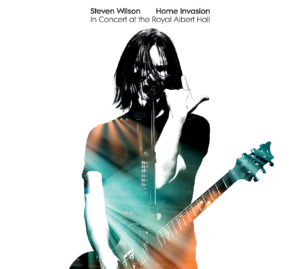 Steven Wilson: Home Invasion – In Concert at The Royal Albert Hall. (Eagle Vision). Both in studio and onstage, the perpetually intrepid aural artiste Steven Wilson proves time and again his mastery of dynamic range. With Home Invasion, recorded at the storied Royal Albert Hall in London on the last of three sold-out nights this past March, Wilson creates a seismic sonic sine wave for how to evolve a set over almost three full hours with specific peaks and valleys in tow. Witness the back-to-back power-punch impact of “People Who Eat Darkness” and “Ancestral,” the emotional, synergistic enmeshing he has with guest vocalist Ninet Tayeb on the always affecting “Pariah,” or even the outright pop-confection playfulness of “Permanating” as prime examples of how some songs start out quietly, build up almost cacophonously, then dial right back into their quieter elements. There’s a clarity in the music Wilson’s top-shelf band plays during these critical moments that a lot of artists don’t quite understand how to harness without resulting in some level of muddy wash. “It’s such a magical feeling onstage at the Royal Albert Hall,” Wilson told me back in September. “It has that kind of strange paradox of being a big venue, but at the same time still has this wonderful intimacy about it, because the audience is all around you. But I’m not just talking about the show itself. It’s more of a general feeling, or a more general approach I have to making music — to keep changing things up as much as possible. I believe the best art has layers, and that it has something that keeps you coming back to it time and time again. It’s a very intangible thing, but I like to think what I do has that kind of quality to it.” With Home Invasion, the once and future king of challenging sound palettes has duly surveyed the live landscape that’s been laid out before him, and hath found it to be good. And we, his listening constituency, continue to reap the rewards of his lofty findings.
Steven Wilson: Home Invasion – In Concert at The Royal Albert Hall. (Eagle Vision). Both in studio and onstage, the perpetually intrepid aural artiste Steven Wilson proves time and again his mastery of dynamic range. With Home Invasion, recorded at the storied Royal Albert Hall in London on the last of three sold-out nights this past March, Wilson creates a seismic sonic sine wave for how to evolve a set over almost three full hours with specific peaks and valleys in tow. Witness the back-to-back power-punch impact of “People Who Eat Darkness” and “Ancestral,” the emotional, synergistic enmeshing he has with guest vocalist Ninet Tayeb on the always affecting “Pariah,” or even the outright pop-confection playfulness of “Permanating” as prime examples of how some songs start out quietly, build up almost cacophonously, then dial right back into their quieter elements. There’s a clarity in the music Wilson’s top-shelf band plays during these critical moments that a lot of artists don’t quite understand how to harness without resulting in some level of muddy wash. “It’s such a magical feeling onstage at the Royal Albert Hall,” Wilson told me back in September. “It has that kind of strange paradox of being a big venue, but at the same time still has this wonderful intimacy about it, because the audience is all around you. But I’m not just talking about the show itself. It’s more of a general feeling, or a more general approach I have to making music — to keep changing things up as much as possible. I believe the best art has layers, and that it has something that keeps you coming back to it time and time again. It’s a very intangible thing, but I like to think what I do has that kind of quality to it.” With Home Invasion, the once and future king of challenging sound palettes has duly surveyed the live landscape that’s been laid out before him, and hath found it to be good. And we, his listening constituency, continue to reap the rewards of his lofty findings.
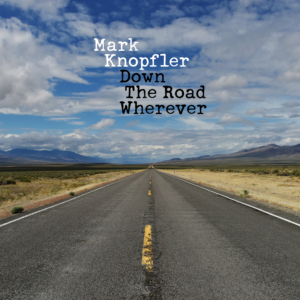 Mark Knopfler: Down The Road Wherever. (British Grove/Blue Note). Mark Knopfler has evidenced a firm grasp of Americana ever since he disbanded Dire Straits in the mid-’90s, building exponentially on the down-home flavors already seeded within Straits tracks like “Why Worry” (in 1985) and “Ticket to Heaven” (in 1991). Down the Road Wherever (best heard on vinyl, without question) is the apex intersection of the Scottish-bred artist’s ambition and craft, deftly entwining his mastery of locational songwriting flavored with Nashvillian sturm und twang. “Back on the Dance Floor” entangles the man’s patented gnarly guitar tone with a sensual background-vocal kiss during the choruses (courtesy Irish enchantress Imelda May) and “Nobody Does That” is what would have resulted if J.J. Cale had been backed by a band masterful at laying down a funky swing groove hybrid, while the dusky piano-and-trumpet torch ballad “Slow Learner” is a character study Randy Newman could get behind and the somber travelogue coda “Matchstick Man” draws a reflective curtain on the proceedings with a wistful look over a vagabond balladeer’s wanderlust-leaning shoulder.
Mark Knopfler: Down The Road Wherever. (British Grove/Blue Note). Mark Knopfler has evidenced a firm grasp of Americana ever since he disbanded Dire Straits in the mid-’90s, building exponentially on the down-home flavors already seeded within Straits tracks like “Why Worry” (in 1985) and “Ticket to Heaven” (in 1991). Down the Road Wherever (best heard on vinyl, without question) is the apex intersection of the Scottish-bred artist’s ambition and craft, deftly entwining his mastery of locational songwriting flavored with Nashvillian sturm und twang. “Back on the Dance Floor” entangles the man’s patented gnarly guitar tone with a sensual background-vocal kiss during the choruses (courtesy Irish enchantress Imelda May) and “Nobody Does That” is what would have resulted if J.J. Cale had been backed by a band masterful at laying down a funky swing groove hybrid, while the dusky piano-and-trumpet torch ballad “Slow Learner” is a character study Randy Newman could get behind and the somber travelogue coda “Matchstick Man” draws a reflective curtain on the proceedings with a wistful look over a vagabond balladeer’s wanderlust-leaning shoulder.
“I remember my pal Chet Atkins once saying that he picked his way out of poverty ‘one song at a time,’ and it just stuck in my mind,” Knopfler detailed just ahead of the album’s release in November. “You get to an age where you’ve written quite a few songs. But Down The Road Wherever seems to be appropriate for me just because it’s what I’ve always done. I’ve always tried to make a record, and also to keep my own geography happening in the songs. The business of making a record, from having written a song and then bringing it to musicians, it can be quite a bendy route . . . [and] that’s part of the fun of it.” Wherever Knopfler’s muse continues to roam, our ears must surely follow.
